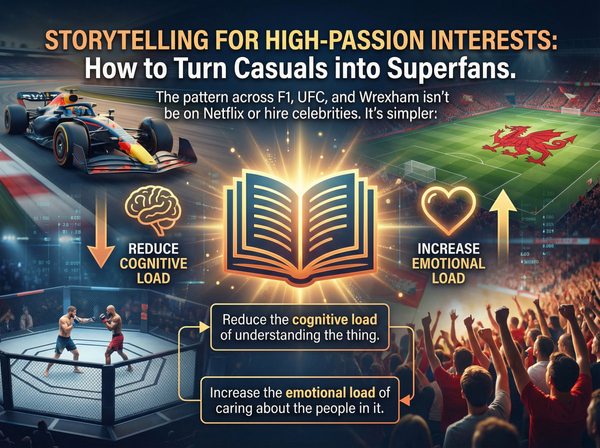Understanding DISC Behavioral Styles
Ever found yourself in a sales conversation where, despite your best efforts, you just weren't connecting with the prospect? Or launched a marketing campaign that resonated perfectly with one audience segment but completely missed another?
The secret often lies not just in what you say, but how you say it – and how your audience prefers to hear it.
This is where the DISC model becomes an indispensable tool.
DISC is a powerful framework for understanding predictable human behavior. It identifies four primary behavioral styles, offering profound insights into how people prefer to communicate, make decisions, react to pressure, and interact with the world around them.
For sales and marketing professionals, understanding DISC can revolutionize your approach and strengthen relationships.
What is DISC? Deconstructing the Four Styles
DISC is an acronym for four core behavioral dimensions:
- D - Dominance: Individuals high in Dominance are typically direct, decisive, results-oriented, and focused on problem-solving. They thrive on challenges and achieving goals.
- Motivated by: Challenge, control, action, freedom from supervision.
- Fear: Loss of control, being taken advantage of.
- I - Influence: People high in Influence are generally interactive, enthusiastic, optimistic, and people-oriented. They love to inspire, collaborate, and are often seen as charismatic.
- Motivated by: Social recognition, group activities, popularity, positive feedback.
- Fear: Social rejection, loss of influence, being ignored.
- S - Steadiness: Individuals with high Steadiness are typically patient, supportive, sincere, and team-oriented. They value stability, loyalty, and a predictable environment.
- Motivated by: Security, appreciation, cooperation, opportunities to help others.
- Fear: Sudden change, instability, offending others.
- C - Conscientiousness: Those high in Conscientiousness are generally careful, compliant, cautious, and detail-oriented. They prioritize accuracy, quality, and logic.
- Motivated by: Opportunities to gain knowledge, precision, quality work, logical systems.
- Fear: Criticism of their work, being wrong, conflict.
While most people exhibit a blend of these styles, one or two typically stand out as their primary drivers, shaping their core behavioral preferences.
Why is DISC Crucial for Sales & Marketing?
Imagine trying to sell a complex software solution to someone who just wants the bottom line (D style) by giving them an exhaustive, detail-by-detail presentation (C style). Or conversely, trying to build rapport with an I style individual by focusing solely on data and specifications. It's like speaking a completely different language.
Here's how understanding DISC can revolutionize your sales and marketing efforts:
For Sales Professionals: Mastering the Art of Connection
- Tailored Communication & Sales Approach:
- D-Style Prospects: Get straight to the point. Focus on results, efficiency, and how your solution solves their problems quickly. Provide options and let them make decisions. Avoid too much small talk; they value directness and speed.
- Pro Tip: Cut to the chase. Show them the fastest path to results.
- I-Style Prospects: Be enthusiastic, engaging, and personal. Focus on how your product can benefit them socially, enhance their reputation, or help them achieve recognition. Share success stories and be open to discussing possibilities and future visions. Build rapport through shared interests.
- Pro Tip: Bring the energy. Connect on a personal level and share exciting possibilities.
- S-Style Prospects: Be patient, supportive, and sincere. Build trust by emphasizing security, reliability, and how your solution will create a stable, harmonious environment. Focus on long-term relationships, teamwork, and how your support ensures a smooth transition.
- Pro Tip: Be patient and build trust. Emphasize security and long-term partnership.
- C-Style Prospects: Be prepared with facts, figures, data, and logical arguments. Focus on accuracy, quality, guarantees, and the precision of your solution. Provide detailed information, research, and be ready to answer technical questions comprehensively. Avoid generalizations or hype.
- Pro Tip: Be prepared with data. Provide proof and meticulous details.
- D-Style Prospects: Get straight to the point. Focus on results, efficiency, and how your solution solves their problems quickly. Provide options and let them make decisions. Avoid too much small talk; they value directness and speed.
- Effective Objection Handling: Knowing a prospect's style allows you to anticipate and address their specific concerns in a way that resonates. A D might object to perceived inefficiencies, an I to a lack of social proof, an S to potential disruptions, and a C to data inconsistencies or a lack of detail.
- Building Rapport Faster: By subtly mirroring their communication style and pace, you can quickly establish trust and make the prospect feel understood and comfortable.
- Optimizing the Closing Process: Understanding their decision-making preferences (e.g., a D makes quick decisions, a C needs time to analyze) allows you to guide them through the sales funnel more effectively, knowing when to push and when to provide space.
For Marketing Professionals: Crafting Messages That Convert
- Crafting Compelling Copy & Content:
- D-Style Marketing: Use strong, active verbs. Focus on benefits, ROI, competitive advantage, and efficiency. Highlight speed and problem-solving.
- I-Style Marketing: Use engaging visuals, vibrant language, and inspiring testimonials. Emphasize community, innovation, and positive experiences. Appeal to their desire for popularity or positive recognition.
- S-Style Marketing: Highlight reliability, stability, safety, and ease of use. Emphasize trust, excellent customer support, and long-term relationships.
- C-Style Marketing: Provide detailed information, data, case studies, and technical specifications. Emphasize accuracy, quality, logical processes, and guarantees. Use precise language.
- Targeted Content Creation: Develop content (blog posts, videos, whitepapers, social media campaigns) that speaks directly to the needs, motivations, and pain points of each DISC style within your target audience. For instance, a how-to guide with step-by-step instructions might appeal to a C, while a motivational webinar would attract an I.
- Optimizing Lead Nurturing: Personalize your email campaigns and follow-up sequences. Based on initial interactions or demographic data, you can infer likely DISC styles and tailor the messaging, frequency, and call-to-actions to match their preferences.
- Website Design & User Experience (UX): Consider how different DISC styles might navigate and interact with your website. Ds want clear calls to action and easy navigation to key information. Cs will look for detailed product specifications and FAQs. Is might be drawn to vibrant visuals and testimonials. Ss will look for clear customer support options and reassuring language.
More Than Just Four Boxes: The Nuance of DISC
While the four primary styles provide a robust framework, it's crucial to remember that very few people are pure D, I, S, or C. Most individuals are a blend, often with one dominant style and a secondary supporting style (e.g., a Di is a Dominant person with Influencing tendencies, making them direct but also sociable and persuasive).
Furthermore, people can flex their behavior based on the situation. A highly analytical C might become more I at a social networking event, or a direct D might soften their approach when mentoring a new team member.
The true power of DISC isn't just about labeling; it's about understanding these natural tendencies and consciously choosing to adapt your own style to better connect with others. This starts with self-awareness – knowing your own primary DISC style helps you understand your natural communication habits and identify where you might need to stretch.
How to Identify DISC Styles
Use your observational skills to make educated guesses in real-time interactions:
- Observe Body Language: Ds often have direct eye contact and assertive gestures; Is are expressive, open, and animated; Ss are typically relaxed, calm, and approachable; and Cs can be more reserved, formal, and analytical in their posture.
- Listen to Language Patterns: Do they use assertive, action-oriented language (D)? Expressive, emotional language (I)? Cautious, precise language (C)? Or more collaborative, team-focused language (S)?
- Notice Decision-Making: Do they decide quickly and definitively (D)? Seek input and consensus from others (I)? Take their time to consider all options and avoid risk (S)? Or require extensive data and analysis before making a choice (C)?
- Assess Their Environment: In a physical office, observe their desk. Is it organized and functional (D)? Lively with personal items and photos (I)? Comfortable and inviting (S)? Or neat, precise, and highly organized (C)?
The Tangible Returns: Measuring DISC's Impact
While the benefits of improved communication might seem qualitative at first, investing in DISC understanding for your sales and marketing teams can lead to measurable ROI. Companies often report:
- Increased Conversion Rates: By tailoring pitches and marketing messages, you close more deals.
- Shorter Sales Cycles: Effective, style-matched communication speeds up decision-making.
- Higher Customer Satisfaction & Loyalty: Customers feel genuinely understood and valued, leading to increased retention and repeat business.
- Reduced Sales Team Attrition: Better internal communication and understanding among team members can lead to a more cohesive, supportive, and effective work environment.
- Improved Employee Engagement: When individuals understand their own style and that of their colleagues, conflict can be reduced, and collaboration enhanced.
The Takeaway
The DISC model isn't about boxing people into rigid categories; it's about understanding, appreciating, and adapting to individual differences.
By incorporating DISC principles into your sales and marketing strategies, you empower your teams to connect with your audience on a deeper, more meaningful level.
Keep Crushing!
- Sales Guy


